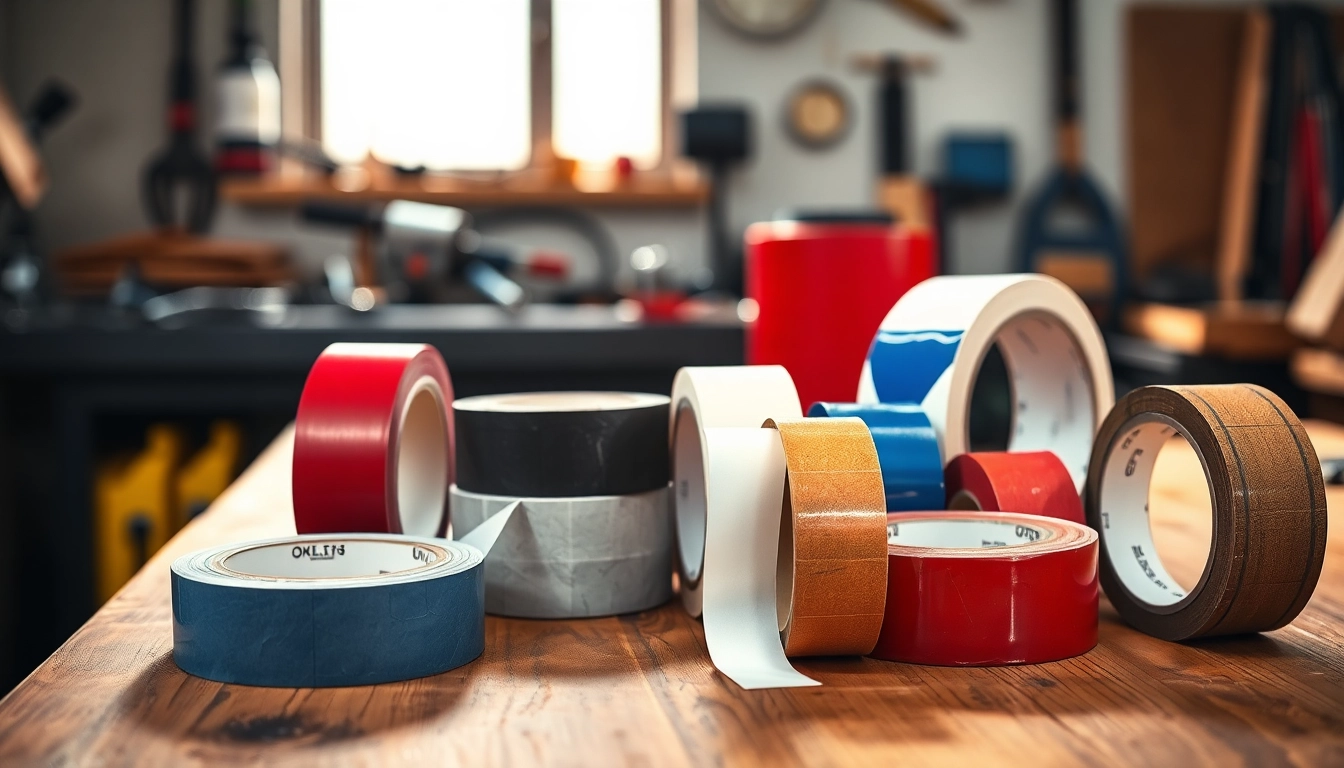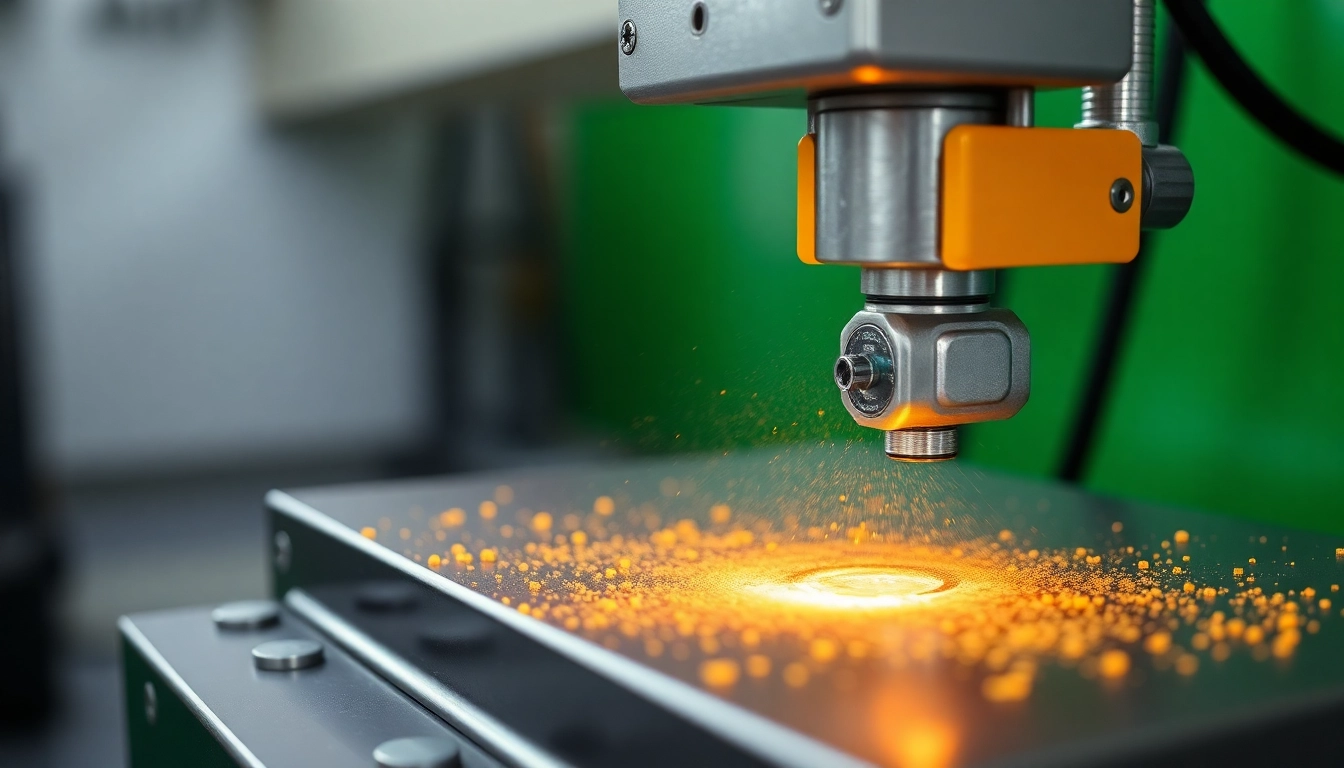Understanding Adhesive Films and Their Applications
Adhesive films are innovative materials that have revolutionized the way surfaces bond in various industries. These solid layers of adhesive are pre-formed on a carrier film, primed for application when subjected to heat or pressure. The precise nature of adhesive films offers significant advantages over traditional bonding techniques, making them essential in advanced manufacturing environments. This article delves into the various aspects of adhesive films, their benefits, applications, technical performance, best practices, and future trends.
What Are Adhesive Films?
Adhesive films are thin layers of adhesive that come in a variety of compositions and can be tailored to meet specific bonding needs. Generally composed of polymers, these films provide a controlled method of adhesion that ensures a uniform application across surfaces. They are available in various thicknesses and strengths and can be activated either thermally or through pressure. The versatility of adhesive films makes them ideal for applications in composites and advanced materials.
Key Benefits of Using Adhesive Films
The use of adhesive films offers numerous benefits that enhance the performance and efficiency of bonding processes. Key advantages include:
- Precision and Consistency: Adhesive films allow for clean, uniform layers, reducing the chances of over-application or waste.
- Enhanced Bonding Strength: When properly applied, adhesive films can create highly durable bonds that withstand various environmental stresses.
- Heat and Chemical Resistance: Many adhesive films are engineered to endure high temperatures and corrosive environments, making them suitable for demanding applications.
- Simplified Application Process: The pre-formed nature of adhesive films streamlines the bonding process, allowing for quicker production times.
- Reduced VOC Emissions: Many adhesive films are designed to minimize volatile organic compounds (VOCs), improving workplace safety and environmental compliance.
Common Applications Across Industries
Adhesive films are widely utilized in various sectors due to their multipurpose nature. Some common applications include:
- Aerospace: Used in composite bonding for aircraft components, where weight and strength are critical.
- Automotive: Essential for lightweight constructions and enhancements in noise and vibration reduction.
- Marine: Employed in boat building to bond composites that resist harsh marine environments.
- Electronics: Act as insulators and bonders for sensitive electronic components.
- Medical Devices: Critical in assembling components that need controlled bonding conditions.
Technical Aspects of Adhesive Film Performance
Composition and Material Characteristics
Adhesive films are formulated from various polymers, such as epoxy, polyurethane, and acrylic, each providing unique properties suited for specific applications. The selection of the polymer affects adhesive strength, thermal stability, and chemical resistance. For instance, epoxy-based films are often selected for their exceptional bonding capabilities in high-performance environments, while polyurethane films may be chosen for their flexibility and impact resistance.
Factors Affecting Adhesive Bond Quality
Several factors play a crucial role in determining the quality of adhesive bonds formed using films. These include:
- Surface Preparation: Cleanliness and roughness of the bonding surfaces dramatically influence adhesion. Proper surface treatments can enhance the wettability of the adhesive.
- Temperature: Each adhesive film has an activation temperature range. Applying heat outside this range can lead to weak bonds.
- Pressure: Adequate pressure during application ensures that air is displaced, allowing the adhesive film to uniformly contact the surfaces.
Testing and Quality Assurance Methods
Quality assurance of adhesive films involves rigorous testing methods to ensure performance under intended conditions. Common tests include:
- Pull-off Tests: Measure the force required to detach the bonded materials to evaluate bond strength.
- Peel Tests: Assess the integrity of the bond under tension.
- Thermal Cycling Tests: Evaluate the performance of adhesive films over varying temperatures, simulating real-world conditions.
Choosing the Right Adhesive Film for Your Project
Criteria for Selecting Adhesive Films
Selecting the appropriate adhesive film for a project involves several critical considerations:
- Application Requirements: Assess the environmental conditions and load requirements for the bond.
- Material Compatibility: Ensure compatibility between the adhesive film and the materials being bonded.
- Processing Method: Evaluate the method of activation (heat or pressure) and ensure it aligns with the production workflow.
Comparative Analysis of Film Types
Different adhesive films offer varying properties and functionalities. For instance:
- Thermal Adhesive Films: Excellent for high-temperature applications, commonly used in aerospace.
- Electrical Insulating Films: Suitable for electronic applications, providing necessary insulation while bonding components.
- Low-Temperature Films: Ideal for environments where lower activation temperatures are required.
Understanding Manufacturer Specifications
Careful scrutiny of manufacturer specifications is essential when selecting adhesive films. Key aspects to evaluate include:
- – Thermal Stability: Maximum and minimum service temperatures.
- – Shelf Life: Timeframe for optimal performance stored under specified conditions.
- – Adhesive Strength: Measured bond strength per specific testing methods to gauge suitability for your application.
Best Practices for Adhesive Film Application
Preparation of Surfaces for Bonding
The surface preparation phase is critical for achieving optimal bond strength. Basic steps include:
- Cleaning: Remove contaminants such as dust, grease, and moisture.
- Texturing: Creating a roughened surface can enhance mechanical bonding characteristics.
- Priming: In some cases, applying a primer can improve adhesion.
Application Techniques for Optimal Results
To achieve the best results when applying adhesive films, follow these techniques:
- Controlled Environment: Apply in a controlled environment to avoid contamination or premature curing.
- Even Pressure Application: Utilize rollers or flat tools to ensure even application of pressure.
- Activate Properly: Ensure the film is activated at the proper temperature and for the necessary duration.
Post-Application Handling and Curing
After application, it is vital to follow proper handling and curing procedures to maximize bond integrity. Tips include:
- Avoid Disturbance: Keep the bonded areas undisturbed until the bond has fully cured.
- Curing Time: Adhere to specified curing times to ensure complete bond formation.
- Temperature Management: Maintain recommended temperature ranges during the curing process to prevent adhesive failure.
Future Trends in Adhesive Film Technology
Innovations in Material Science
Ongoing research and development in material science are driving innovations in adhesive films. Emerging trends include:
- Smart Adhesives: These materials can adapt their properties in response to environmental changes, enhancing reliability in dynamic applications.
- Biodegradable Adhesive Films: Driven by sustainability efforts, developers are creating eco-friendly adhesives that do not compromise performance.
- Enhanced Performance Coatings: Innovations that improve bond durability and environmental resistance are on the rise.
Potential Industry Advancements
The future of adhesive films aligns with advancements in various sectors, indicating potential advancements in:
- Automation: Integration with automation technologies for high-volume production.
- Customization: Tailoring adhesive film properties to meet specific requirements in niche industries.
- Composite Material Development: Continued synergy between adhesive films and the evolution of composite materials.
Environmental Considerations and Sustainability
As global focus shifts toward sustainability, the adhesive film industry is adapting by addressing environmental concerns through:
- Recyclability: Developing adhesives that can be easily recycled.
- Low Environmental Impact Materials: Focusing on raw materials that have minimal ecological footprint during production.
- Lifecycle Analysis: Incorporating lifecycle assessments to validate the sustainability of adhesive products.
In conclusion, adhesive films present a unique solution for a wide array of bonding applications across industries. By understanding their properties, benefits, and best practices for application, manufacturers and project managers can leverage these materials for enhanced performance, efficiency, and sustainability in their projects. Interested readers can further explore adhesive films at https://www.makobond.com/adhesives-films.



